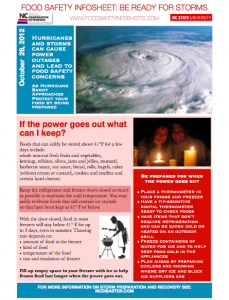The power starting going on and off about midnight. A tree branch went through a neighbor’s car windshield at 3 a.m. The electricity has been out since 4 a.m.
And it’s going to get worse.
 The freezing rain and ice storms throughout the Midwest hit Manhattan (Kansas, that is) hard last night. Tree branches loaded with ice are falling every five minutes. So after a leisurely morning spent decorating the Christmas tree and praising our gas fireplace, gas stove, gas water heater and gas barbecue, we couldn’t take it anymore and walked the dogs up to Kansas State University — which is closed, but does have electricity and Internet.
The freezing rain and ice storms throughout the Midwest hit Manhattan (Kansas, that is) hard last night. Tree branches loaded with ice are falling every five minutes. So after a leisurely morning spent decorating the Christmas tree and praising our gas fireplace, gas stove, gas water heater and gas barbecue, we couldn’t take it anymore and walked the dogs up to Kansas State University — which is closed, but does have electricity and Internet.
Before leaving I noticed the refrigerator contents were warming up. Same with the freezer. We’ve been eating our way through the perishables, and moved the high-risk foods to a cooler and placed it on the front porch, where it is 32F.
 In anticipation of the storm, USDA sent an advisory yesterday, Keeping food safe during an emergency. I can’t really argue with most of the points, below.
In anticipation of the storm, USDA sent an advisory yesterday, Keeping food safe during an emergency. I can’t really argue with most of the points, below.
And if the news is slow getting out on the listservs, you now know why.
Steps to follow to prepare for a possible weather emergency:
* Keep an appliance thermometer in the refrigerator and freezer. An appliance thermometer will indicate the temperature in the refrigerator and freezer in case of a power outage and help determine the safety of the food.
* Make sure the freezer is at or below 0° F and the refrigerator is at or below 40° F.
* Freeze containers of water for ice to help keep food cold in the freezer, refrigerator or coolers after the power is out.
* Freeze refrigerated items such as leftovers, milk and fresh meat and poultry that you may not need immediately – this helps keep them at a safe temperature longer.
* Plan ahead and know where dry ice and block ice can be purchased.
* Store food on shelves that will be safely out of the way of contaminated water in case of flooding.

* Have coolers on hand to keep refrigerator food cold if the power will be out for more than four hours. Purchase or make ice cubes and store in the freezer for use in the refrigerator or in a cooler. Freeze gel packs ahead of time for use in coolers.
* Group food together in the freezer — this helps the food stay cold longer.
Steps to follow after the weather emergency:
* Keep the refrigerator and freezer doors closed as much as possible to maintain the cold temperature.
* The refrigerator will keep food safely cold for about 4 hours if it is unopened. A full freezer will hold the temperature for approximately 48 hours (24 hours if it is half full and the door remains closed.)
* Food may be safely refrozen if it still contains ice crystals or is at 40° F or below.
* When in Doubt, Throw it Out.



 On Tuesday night, the entire sky over Manhattan was colored green. And it happened at least five other times.
On Tuesday night, the entire sky over Manhattan was colored green. And it happened at least five other times. We’re fortunate, as hundreds of thousands across the Midwest still have no power, including several thousand in Manhattan. With that in mind,
We’re fortunate, as hundreds of thousands across the Midwest still have no power, including several thousand in Manhattan. With that in mind,  To turn a backyard into a refrigerator, place food in a cooler to protect it and monitor with a thermometer. Pack ice or snow around the food to help keep it cold.
To turn a backyard into a refrigerator, place food in a cooler to protect it and monitor with a thermometer. Pack ice or snow around the food to help keep it cold.
 As I noted
As I noted  Here’s my experience, after 30 hours of no electricity.
Here’s my experience, after 30 hours of no electricity. The fridge (right) is of some use, at 52F. Yoghurt, cheese, condiments, produce, they will be good for awhile yet.
The fridge (right) is of some use, at 52F. Yoghurt, cheese, condiments, produce, they will be good for awhile yet.
 The freezing rain and ice storms throughout the Midwest hit Manhattan (Kansas, that is) hard last night. Tree branches loaded with ice are falling every five minutes. So after a leisurely morning spent decorating the Christmas tree and praising our gas fireplace, gas stove, gas water heater and gas barbecue, we couldn’t take it anymore and walked the dogs up to Kansas State University — which is closed, but does have electricity and Internet.
The freezing rain and ice storms throughout the Midwest hit Manhattan (Kansas, that is) hard last night. Tree branches loaded with ice are falling every five minutes. So after a leisurely morning spent decorating the Christmas tree and praising our gas fireplace, gas stove, gas water heater and gas barbecue, we couldn’t take it anymore and walked the dogs up to Kansas State University — which is closed, but does have electricity and Internet. In anticipation of the storm,
In anticipation of the storm, 
